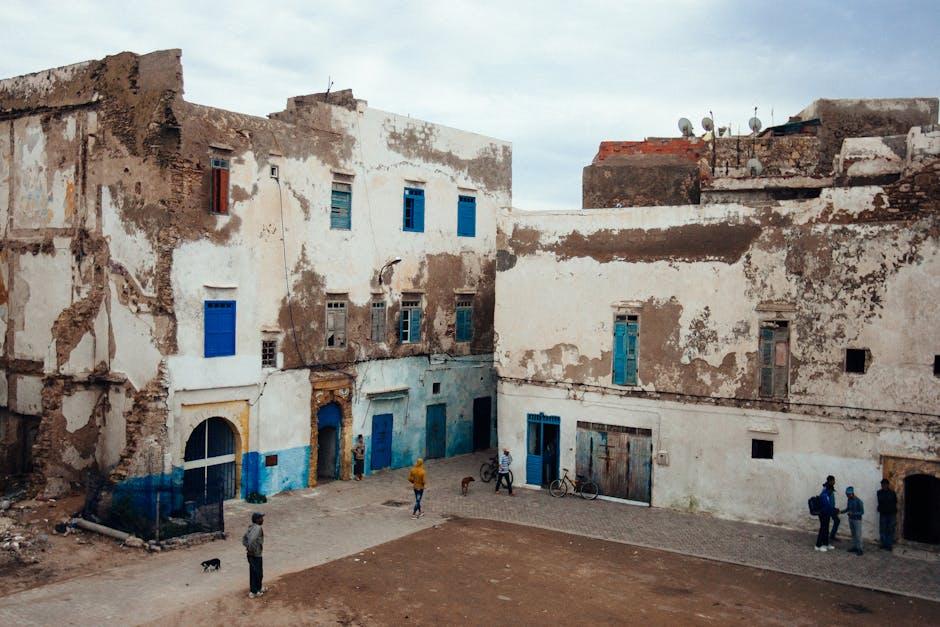In the bustling heart of a sun-drenched piazza, where the aroma of freshly baked bread mingles with the distant strains of a street musician’s melody, a silent battle unfolds. It is a conflict not waged with swords or shields, but with the subtle, insistent footsteps of eager travelers and the resolute whispers of a community striving to preserve its essence. This is the tug-of-war of tourism—a dynamic and delicate dance where the vitality of cultural heritage hangs in the balance. As the world grows smaller and more interconnected, the allure of foreign lands and their storied pasts beckon with increasing fervor. Yet, as eager eyes and cameras converge on these cultural treasures, a pressing question arises: can the soul of a place withstand the weight of its own popularity? In this exploration, we delve into the intricate relationship between tourism and cultural preservation, examining the forces at play in this global phenomenon and pondering the future of destinations that stand at this crossroads.
Balancing Act: Navigating the Impact of Tourism on Local Cultures
The vibrant tapestry of local cultures can often find itself in a delicate dance with the influx of global visitors. While tourism can serve as a bridge to cross-cultural understanding, it also risks transforming unique traditions into mere spectacles. The challenge lies in preserving authenticity without stifling economic opportunity. Communities may experience a tug-of-war between maintaining their heritage and catering to tourists’ expectations, leading to a complex interplay of benefits and drawbacks.
- Economic Opportunities: Tourism can provide essential financial support, helping to preserve traditional crafts and practices.
- Cultural Erosion: The commodification of culture might lead to a loss of genuine customs and practices, replaced by tourist-friendly versions.
- Community Empowerment: Engaging locals in tourism planning can foster a sense of ownership and pride in their cultural heritage.
- Environmental Impact: The strain on local resources can affect not only the environment but also the cultural landscapes that communities depend on.
Finding the right balance requires thoughtful strategies and collaboration between stakeholders, ensuring that tourism becomes a vehicle for cultural preservation rather than erosion. By empowering local voices and promoting sustainable practices, the world can enjoy the richness of diverse cultures without compromising their essence.

Preserving Heritage: Strategies for Sustainable Cultural Tourism
- Community Engagement: Involving local communities is essential in developing sustainable cultural tourism. By integrating their voices and values, destinations can ensure that tourism initiatives are respectful and reflective of the indigenous culture. This approach not only empowers locals but also enriches tourists’ experiences by providing authentic cultural exchanges.
- Regulation and Policy Development: Establishing robust policies is critical in safeguarding cultural heritage. Governments and tourism boards should collaborate to create frameworks that prioritize the preservation of historical sites and cultural practices. This may include limiting visitor numbers during peak times or enforcing guidelines that protect sacred traditions from commercialization.
- Education and Awareness: Raising awareness about the significance of cultural heritage can foster a deeper appreciation among tourists. Informative tours, workshops, and interactive experiences can educate visitors about the history and importance of cultural landmarks, promoting responsible tourism that respects local customs and traditions.
- Innovative Technology Use: Utilizing technology such as virtual reality or augmented reality can offer immersive experiences while minimizing physical impact on delicate sites. These digital tools can simulate historical environments, allowing tourists to explore cultural wonders without contributing to their degradation.
Through these strategies, a delicate balance can be struck between promoting tourism and preserving cultural heritage, ensuring that both thrive harmoniously for future generations.
Engaging Communities: Empowering Locals in Tourism Development
In the delicate balance between tourism and cultural preservation, local communities hold the key to maintaining authenticity while embracing progress. Empowering locals in tourism development ensures that cultural nuances are respected and celebrated rather than overshadowed. By involving community members in decision-making processes, the tourism industry can create a symbiotic relationship that benefits both visitors and residents alike. Local artisans, storytellers, and guides can offer unique insights and experiences that foster a deeper understanding and appreciation of the destination’s heritage.
Some strategies to empower communities include:
- Collaborative planning: Involving local stakeholders in the creation and execution of tourism strategies.
- Capacity building: Providing training and resources to locals to manage tourism initiatives effectively.
- Cultural preservation: Ensuring that development projects prioritize the protection and promotion of local traditions.
- Economic inclusion: Creating opportunities for locals to benefit financially from tourism through entrepreneurship and employment.
By implementing these approaches, tourism can evolve into a force for cultural preservation rather than a threat, ensuring that the essence of local communities is preserved for future generations.

Innovative Approaches: Blending Tradition with Modern Tourism Practices
In the ever-evolving landscape of global tourism, the challenge lies in harmonizing time-honored traditions with contemporary tourism demands. At the heart of this balance is the art of creating experiences that are both authentic and engaging. This fusion calls for innovative approaches that respect cultural heritage while embracing modern conveniences. For instance, digital storytelling can breathe new life into ancient legends, offering tourists immersive experiences through augmented reality tours. Meanwhile, local artisans can reach wider audiences by incorporating traditional crafts into modern-day souvenirs, blending the old with the new in an appealing manner.
- Community Involvement: Engaging local communities in tourism planning ensures that cultural practices are preserved and respected.
- Eco-friendly Initiatives: Sustainable tourism practices help protect both cultural sites and natural landscapes.
- Tech Integration: Utilizing apps and virtual guides to provide educational content about cultural significance and history.
- Cultural Festivals: Hosting events that showcase local traditions while inviting global participation can foster mutual understanding.
By weaving traditional narratives with cutting-edge technology, the tourism sector can offer enriched experiences that not only captivate visitors but also ensure the survival of cultural identities. The key is to innovate without erasing, to celebrate without exploiting, and to ensure that the stories of the past are not lost in the pursuits of the future.






























